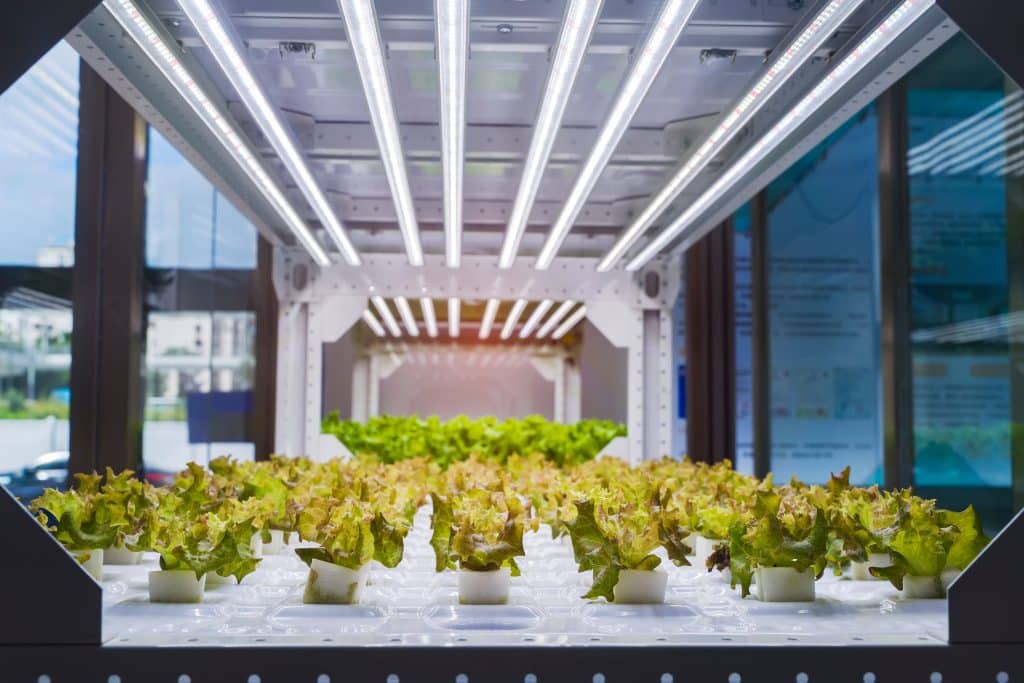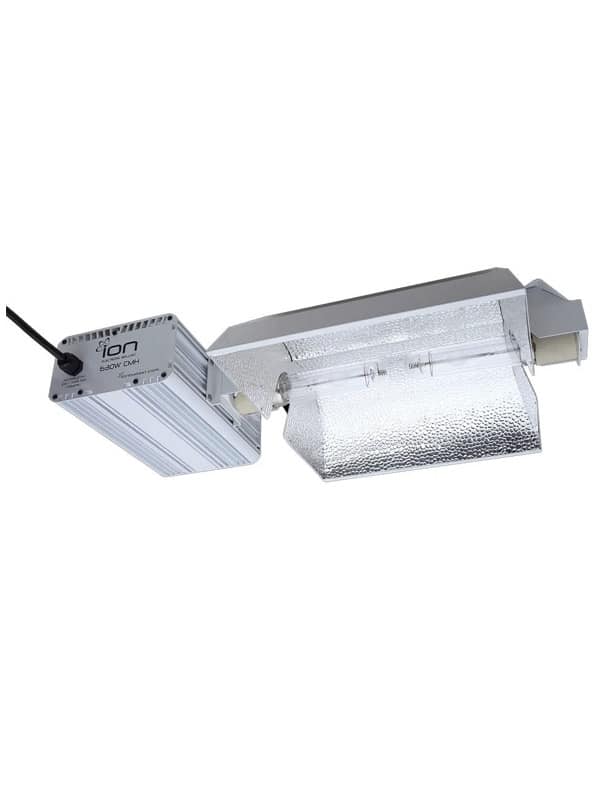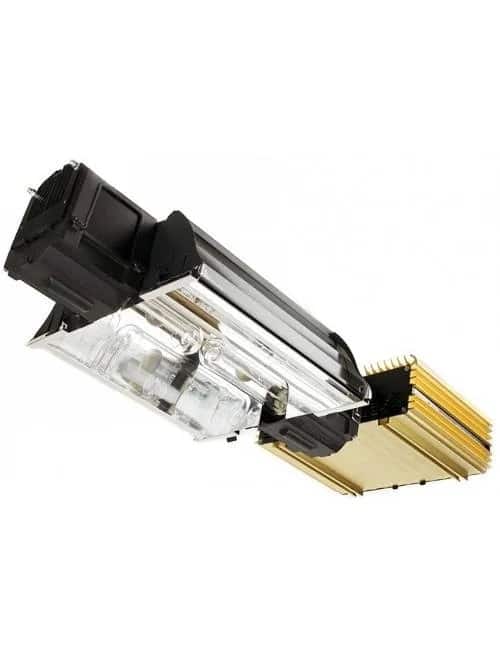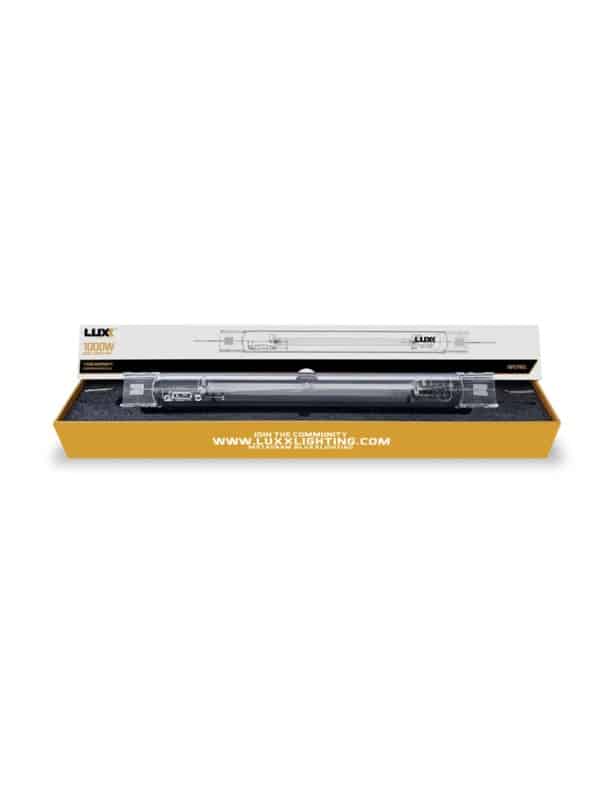Growing hydroponic plants requires the right grow lights based on your plant’s needs, grow room space, and more. Two popular types of grow lights are CMH (ceramic metal halide) and HPS (high-pressure sodium). Each lighting system has its own pros and cons, so it’s important to understand their differences to choose the best one for your grow room.
From average lifespans to space requirements, here’s a comparison guide on CMH vs HPS grow lights.
CMH vs. HPS Grow Lights: What’s the Difference?
CMH, or ceramic metal halide, and HPS, or high-pressure sodium, lights are both types of HID (high-intensity discharge) lights. CMH and HPS lights differ in a few key ways — here’s how.
CMH vs HPS Longevity Comparison
Grow lights are an investment, so growers should understand their lifespans before buying. Let’s talk about how long CMH and HPS lights last.
CMH Longevity
CMH grow lights have longer lifespans than HPS grow lights. A study shows that on average, CMH lights last about 24,000 hours. This is because the ceramic components of a CMH light can withstand higher temperatures — meaning they radiate less heat and draw fewer watts per lumen produced, compared to HPS systems.
A CMH lamp features ceramic arc tubes, which are known to be far more resistant to premature breakdown. Studies show that CMH grow lights can last more than 24,000 hours and maintain over 80% of their intensity for up to 20,000 hours. CMH grow lights also last longer with less frequent lamp replacements.
HPS Longevity
HPS grow lights have a shorter lifespan than CMH lights. On average, HPS grow lights have a 9,000-hour life expectancy. If you choose HPS lighting, understand that they require more lamp replacements than CMH lighting.

CMH vs HPS Energy-Efficiency Comparison
Grow lights that use more energy can result in higher electricity bills. Energy efficiency is an important factor to consider when selecting a grow light, as it can have a significant impact on your production costs, both long and short term.
CMH Energy-Efficiency
CMH grow lights require less electricity to produce the same amount of light which saves on energy bill costs. In addition to lasting as long as three years before replacing lamps, a CMH lamp can convert electricity into usable light better than most other lamps. CMH lights are up to 20 percent more efficient than traditional CMH lamps and feature a higher yield per watt.
HPS Energy-Efficiency
HPS lights are less energy-efficient than CMH lights. They require more electricity to generate the same light, leading to higher energy costs. Since HPS lights have comparatively low photosynthetically active radiation (PAR) compared to HPS, they work harder to produce the same light. The PAR rating for HPS is why they have lower energy efficiency and shorter lifespans.
CMH vs HPS Color Light Spectrum
The color light spectrum measures the range of colors a grow light emits. Different types of plants require various light spectrums for optimal flower production and maturity. It’s important to ensure your grow lights provide the right type of color for your plants.
CMH Light Spectrum
CMH lamps offer a more balanced light spectrum than HPS lamps. This means they provide plants with the full colors necessary to support photosynthesis and plant growth. They also tend to be heavier on blue light which helps with vegetative growth.
HPS Light Spectrum
HPS lamps offer a partial color light spectrum and tend to be heavier on red light. Their color features helps with flowering development. The scope of usable light ranges from 400 to 700 nanometers. However, CMH and HPS grow lights can both be used to gain maximum color spectrum benefits.
CMH vs HPS Color Rendering Index (CRI) Comparison
The color rendering index, or CRI, describes how a light source’s color changes how objects appear to the human eye. It can cause subtle variations in color, making it difficult to tell how plants are adapting indoors. The higher the CRI, the more accurately colors will be reproduced. Higher CRI ratings can be beneficial for plants that need to accurately identify colors for photosynthesis.
CMH Lights CRI
The CRI for CMH and HPS lights ranges from 20-40, with CMH lights up to 96 — closer to the sun’s CRI at 100. They can render colors more accurately and provide better viewing quality than HPS lights. Since the CRI for CMH grow lights is usually rated between 80 and 96, they’re efficient at allowing the true plant colors to shine through without the unnatural-looking color variation caused by HPS lights.
HPS Lights CRI
HPS Lights have a lower CRI than CMHs, meaning that colors appear less vivid when illuminated. Not being able to accurately distinguish different colors under HPS light can make it difficult to accurately gauge plant health and growth — leading to potential plant problems, such as premature growth and inability to produce flowers.

CMH vs HPS Color Stability Comparison
Color stability measures how consistently a light source emits the same color over its lifetime. It’s important to maintain consistent color when growing hydroponic plants because sudden spectral changes can negatively impact them such as stunted growth.
CMH Color Stability
CMH lights have superior color stability compared to HPS lamps, as they maintain their original spectrum for extended periods. Growers can expect consistent performance from their CMH lights without worrying about sudden changes in spectral output. In addition to offering more color stability, CMH grow lights provide consistent color rendering.
HPS Color Stability
HPS lights have less color stability than CMH lights over time, but their light spectrum remains relatively consistent. This feature makes HPS lighting a practical choice for plants that require a consistent color spectrum — as they won’t need to be replaced as often.
CMH vs HPS UV Radiation Blockage Comparison
UV radiation may not be visible to the human eye, but it’s essential for plant growth. UV radiation is essential for producing healthy plants because most require a lot of UV light during their vegetative stages to support the solid and healthy branch development.
It’s important to note that there are several types of UV light, known as:
- UV-A: Light in the 320 to 400 nm range — enhancing plant pigmentation and thickening leaves
- UV-B: Light in the 29 to 320 nm range — enhancing plant quality and flavor
As a safety precaution, always use proper grow room lenses to ensure your eyes are protected from UV rays.
CMH UV Blockage
CMH lights emit ultraviolet (UV) and infrared (IR) rays, which are beneficial for stimulating plant growth, leaf penetration, and increasing yields. This lighting system uses about less than 3% UV-A and no UV-B. Although UV-A rays are less harmful than UV-B, it penetrates more deeply. Due to its balanced light spectrum, CMH grow lights provide more UV-A and IR light than many of their alternatives.
HPS UV Blockage
HPS lights do not have UV. Therefore grow room lenses are not warranted unless you are cultivating plants outside in the sun, protecting from grow light glares, or choosing CMH lights.
CMH vs HPS Canopy Penetration Comparison
Since CMH and HPS grow lights are a form of HID, they provide great canopy penetration than most other lighting systems. Canopy penetration is determined by the light reflector and total grow light wattage. Understanding your lighting equipment’s strength is crucial because plants require different light intensity levels by species and growth stage.
For example, if you’re cultivating seedlings, they require the highest light intensity than their flowering and vegetative stages — so higher canopy penetration is required. Additionally, tropical plant species require higher canopy penetration than other plant types.
For both CMH and HPS, it’s recommended to have at least five feet of space in between the canopy and grow light. This helps to prevent plants from overheating since both lighting systems have the same heat emission levels. Since a grow light’s heat output is measured by wattage, the higher the watts, the deeper the canopy penetration and higher the heat levels it will be.
CMH vs HPS Pricing Comparison
Pricing is another factor to consider when selecting a grow light. Generally speaking, CMH lights tend to be more expensive than HPS lights due to their higher efficiency and better color spectrum. However, in some cases HPS lights may be cheaper in the long run as they have a longer lifespan than CMH lights. Ultimately, it is important to consider your budget and decide which type of light is the best option for your growing needs.
CMH Costs
CMH grow lights typically have higher upfront costs than HPS. The average cost of a CMH light fixture is $100-700, which is less than the average HPS cost. Hydroponic growers and facilities with larger budgets would be best applied to CMH grow lights.
HPS Costs
HPS lights are more affordable than CMH and tend to cost between $100-400. However, since they’re less energy-efficient than CMH, it can increase energy bills and production costs. Additionally, HPS lights have a shorter lifespan than CMH, so lamp replacements are more frequent and should be considered for additional costs.

CMH vs HPS Grow Space Requirement Comparison
It’s important to consider grow room size when choosing a grow light. It has to not only fit within your grow room, but be powerful enough to provide adequate light coverage. As a rule of thumb, 30 watts per square foot is recommended. Once you measure your grow room’s total square footage, you can calculate your grow light’s wattage requirements.
CMH Space Requirements
CMH lights are generally smaller in size than HPS lights, so they can fit in smaller grow tents or rooms. Additionally, since CMH lights have less wattage than HPS, it will not increase the temperature inside a small grow room as quickly.
HPS Space Requirements
spacing requirements are best applied for large-scale hydroponic systems or cultivation facilities. Since HPS lights have higher wattage, they can build up heat more quickly inside a small grow room compared to CMH.
CMH vs. HPS Grow Lights: Which is Best?
Now that you know the differences between CMH vs. HPS grow lights, which one is best for your hydroponic setup? Here is a recap on their best-use applications to make the best decision.
| CMH Grow Lights | HPS Grow Lights |
| Balanced light spectrum Higher CRI and color stability Smaller system size UV-A & IR radiation More upfront costs Longer lifespan Limited dimmability | Partial light spectrum Lower CRI and color stability Low PAR rating Larger system size Less upfront costs Shorter life span Dimmable on all wattages |
Considering all the above factors, you can make a more informed decision when choosing between CMH vs HPS grow lights. Both grow lights have their pros and cons, so it’s essential to consider your budget, grow room space, and plant breeds before buying.
Whether you prefer the higher output of an HPS light or the improved color spectrum of CMH, both are great grow light options.
Shop CMH or HPS Grow Lights Today
GrowGeneration carries a wide selection of grow lights for home growers, hydroponic facilities, and vertical farms. From herbs and vegetables to advanced hydroponic supplies, we have everything you need for a successful garden.
Shop CMH grow lights, HPS grow lights, or contact a GrowPro at (800) 935-8420 for help purchasing the right grow lighting system today!










